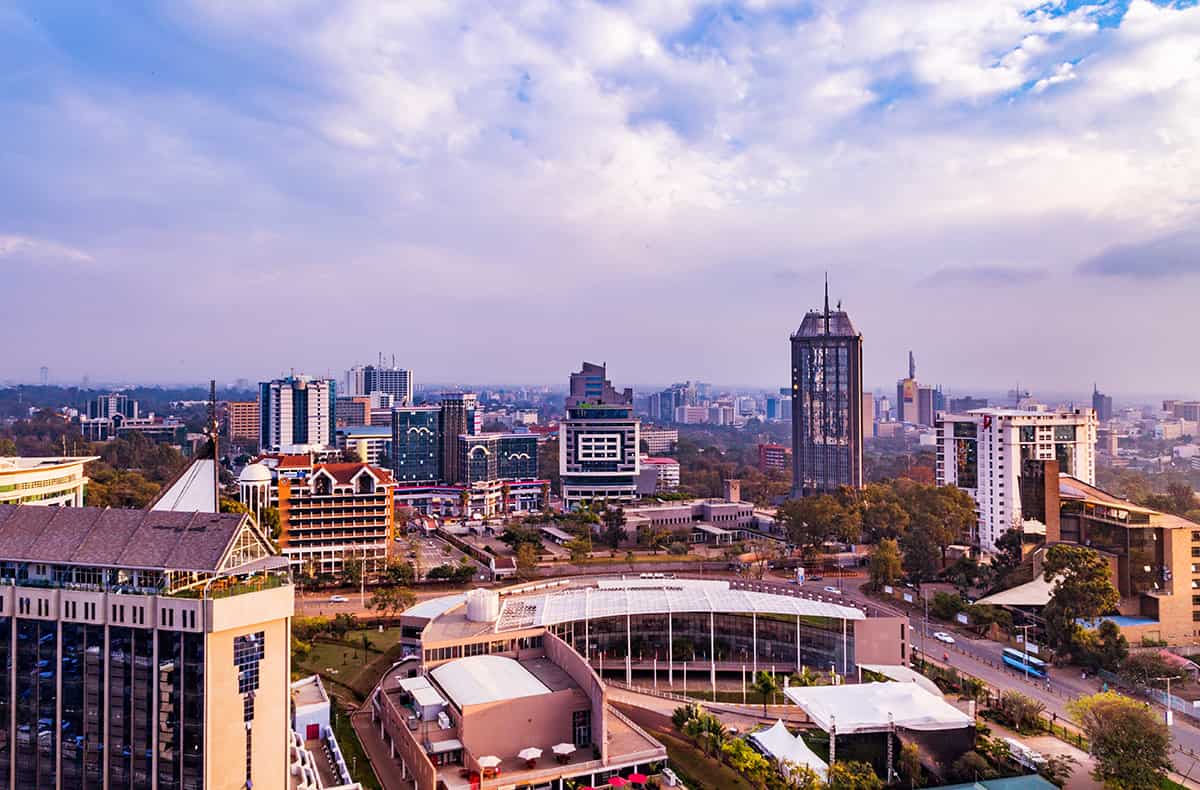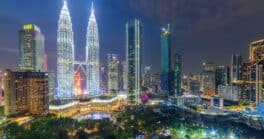Vital Statistics
Location: East Africa
Neighbors: Tanzania, Uganda, South Sudan, Ethiopia, Somalia
Population (2023): 55.4 million
Official languages: Swahili, English
GDP per capita (2022): $2,099
GDP growth (2022): 4.8%
Inflation (2022): 7.7%
Currency: Kenyan shilling
Investment promotion agency: Kenya Investment Authority
Investment incentives: Special incentives including customs duty and VAT exemptions for firms operating in special economic zones; tax incentives mainly in form of capital deductions; 10-year corporate tax holiday and 25% tax rate for a further 10 years for companies in export processing zones; 10-year withholding tax holiday; stamp duty exemption; Nairobi Securities Exchange does not restrict foreign ownership of listed companies; repatriation of capital, dividends, interest, and profits
Corruption Perceptions Index rank (2022): 123/180
Political risks: Political instability every election cycle, with contested results; protests; instability among some neighbors; fractured political framework; rivalries along ethnic, tribal, and religious divides
Security risks: Rising food insecurity; water pollution and shortages; deforestation and desertification; soil erosion; high unemployment and poverty levels; exposure (as net fuel, wheat, and fertilizer importer) to global price impacts of war in Ukraine; attacks by Somalia-based al-Shabab terrorists; maritime threat from Somali pirates; border disputes with Somalia; transit country for drug trafficking
Political risks: Frustration over the weak economic situation; high inequality, with majority of population below poverty line; expected austerity measures; no history of large-scale political violence in the past three decades, peaceful transitions of power
Security risks: Expected social discontent as economy worsens; assaults and petty crime, including carjacking; landmines in areas bordering Angola, the DRC and Mozambique; accidents on poorly maintained roads; water supply shortages and power outages; illegal child labor, including human trafficking
PROS
Gateway to the East African market with a population of over 400 million
Relatively diverse economic base
Highly skilled and young labor force
Vast arable land
Renewable energy opportunities in geothermal, wind, solar
Massive and unexploited mineral resources
Vibrant financial sector
CONS
Corruption
Burdensome bureaucratic processes
Weak macroeconomic fundamentals
Economy vulnerable to internal and external shocks
Extreme weather patterns due to climate change
Threats of terrorism and piracy
Armed banditry in border areas
High risk of attacks on foreigners and kidnapping in some areas
High crime rate in most regions
Frequent power outages
Sources: Allianz Trade, Central Bank of Kenya, CIA World Factbook, Constitution of Kenya, the EastAfrican, Government of Canada Global Travel Advisory, Kenya Investments Authority, Macrotrends, Statista, Trading Economics, Transparency International, Unctad, US State Department, World Bank, World Population Review
For more information, check out Global Finance’s Kenya Economic Report data page.
Rarely does an African leader attract the global limelight. Yet, during his first year in office, Kenya’s President William Ruto captured international attention.
Ruto has been broadly vocal on rather sensitive and often controversial issues like overhaul of international financial systems, fair distribution of the climate change burden, accelerated transition to clean energy, and even his support for Ukraine in its war with Russia. While taking these audacious positions, he has constantly serenaded Western capitals with the clarion call that “Kenya is open for business.” The effect has been growing interest in Kenya from foreign investors.
In September, Kenya secured an overflowing basket of potential investment deals from US companies across various sectors: big tech, agriculture, transport (e-mobility), pharmaceuticals, renewable energy, and sports.
“Kenya is a full package investment destination,” Ruto told top executives of Silicon Valley tech giants during September’s US-Kenya Business Roadshow.
As East Africa’s second-biggest economy and a regional hub, Kenya has always been a big attraction for foreign direct investment (FDI). In 2022, when overall FDI flows into Africa plunged by about 44% to $45 billion, according to the UN Conference on Trade and Development (Unctad), Kenya was among the shining stars, posting a 63.9% increase from $463 million in 2021 to $759 million. The flows, however, remain significantly below the 2011 peak of $2.2 billion.
Kenya is also a leading destination for venture capital. Last year, funding increased by 33%, as US Ambassador Meg Whitman noted in a June speech. The flows were diversified across enterprises in e-commerce, cleantech, fintech, agritech, and similar industries, she added.
Though an essential market for investors, Kenya’s position as the undisputed investment destination in East Africa has been floundering in recent years. In 2022, Uganda attracted FDI worth $1.5 billion, a 39% increase over 2021; while Tanzania received flows worth $1.1 billion, an 8% rise over the previous year.
“Kenya is currently categorized as a medium to high-risk country,” says Luca Moneta, senior economist for Africa and the Middle East at Allianz Trade, which has rated Kenya as “sensitive risk for enterprise.” The reason is that Kenya is grappling with numerous challenges. Generally, investor sentiments remain positive, driven by a GDP growth rate averaging 4.5% over the past decade. This year, the government projects 5.5% growth and maintains this growth momentum for the next three years, anchored on the Bottom-Up Economic Transformation Agenda.
Kenya As Africa’s Innovation Hub
However, dark clouds have gathered. Politically instigated protests and social stresses like rising unemployment and poverty are ticking bombs. Macroeconomic fundamentals are also in turmoil. The local currency has depreciated by 22.2% to the dollar year-on-year, exposing investors to exchange rate risks. At 6.8% in September, inflation remains within the 2.5% to 7.5% target range, while ballooning public debt at about $68 billion has instigated sovereign rating downgrades. Besides, rising interest rates and squeezed foreign exchange reserves are causing jitters among investors.
Poor climate conditions, including anticipated El Niño rains that have wreaked widespread havoc in the past, add to the pain.
Global factors, particularly the Russia-Ukraine war, big economies’ financial tightening and rising crude prices, negatively impact Kenya’s ability to stabilize the economy. The country, for instance, has seen domestic retail fuel prices rise to record highs while petroleum products import bills rose by 80% to $4.2 billion 28.4 billion in 2022 from $2.3 billion in 2021. “Kenya remains highly vulnerable to internal and external shocks,” states Penninah Munyaka, an associate partner at German law firm Rödl & Partner.
Rising insecurity, particularly the return of attacks instigated by the Somalia-based al-Shabab terrorist group, is also becoming a significant concern.
The mountain of challenges is fanning flames of disquiet among the population. However, Ambassador Whitman says foreign companies operating in Kenya and potential investors remain optimistic. The US pharma and biotech giant Moderna is building a new $500 million vaccine manufacturing facility.
Key factors make Kenya attractive is the country’s labor quality, which consists of young, dynamic and tech-savvy workforce that has made Kenya a hub of innovations.
The country has also improved critical infrastructures, including numerous undersea fiber-optic cables that connect the country to Asia and Europe as well as streamlined business processes. More importantly, it boasts of a vibrant financial sector that makes profit repatriation straightforward. Also, the judicial system is largely autonomous.
“Investors are comfortable because they can repatriate profits and have faith in the justice system,” explains Munyaka. She adds, however, that the taxation regime needs ring-fencing for long-term stability. “Kenya has many levies that are quite untidy and cumbersome for investors in terms of planning,” she asserts.
Kenya is also a party in regional trade agreements—such as the East African Community, the Common Market for Eastern and Southern Africa, and the African Continental Free Trade Area (AfCFTA)—offering reduced tariffs and streamlined customs procedures.
In early October, the country joined nine other countries in the Pan African Payments and Settlement System, allowing companies to transact with peers using local currencies, which then Trade Secretary Moses Kuria called a major boost for the AfCFTA.
These investments and agreements open key sectors like smart agriculture, manufacturing, financial services, renewable energy, transport, information and communication technology, health, retail, tourism, and real estate to foreign investors and expand the scope of trade integration. About 45% of Kenyan exports in 2022 went to other African countries, an increase from 39% in 2019. According to Allianz Trade, the country serves as a base for foreign companies targeting the East African market.
“Kenya offers access to a large and growing consumer base in Africa,” observes Allianz’s Moneta. After years of frustrating talks, he adds, the country scored a major achievement after signing economic partnership agreements with the EU in June. The EU is Kenya’s second-largest trading partner, generating about $3.5 billion in trade in 2022, a 27% increase over 2018. Now Kenya will not only export more to the EU but also become more appealing to EU investors.
Trade with the US is also booming. Last year, the US became Kenya’s largest export market, edging ahead of neighboring Uganda. Kenya exported about $890 million in goods to the US. The $1.5 billion total US-Kenya trade is bound to increase substantially when the two countries conclude the ongoing free trade area negotiations, opening more opportunities to US companies.
In the eyes of investors, Kenya’s stature is also propelled by the country’s positioning itself as a champion in tackling climate change. In September, the country hosted the high-profile inaugural Africa Climate Summit, where approximately $23 billion was pledged for green projects.
The country expects to attract a huge chunk of those investments and is already witnessing tangible commitments. The EU, for instance, has committed about $12.6 million in grants to the Kenyan green hydrogen industry. And the US Millennium Challenge Corporation has provided $60 million to modernize urban transport in Nairobi with various projects, including electric buses.
Western companies are bolstered by the current administration’s inclination to the West as opposed to the East, particularly China. It took over a year for President Ruto, who has thinly alluded the debts to China, its second-largest creditor, are partly to blame for Kenya’s economic woes, to visit China. This came on the occasion of the third Belt and Road Forum. The Kenyan leader was also a notable absentee at the Russia-Africa summit in late July.




